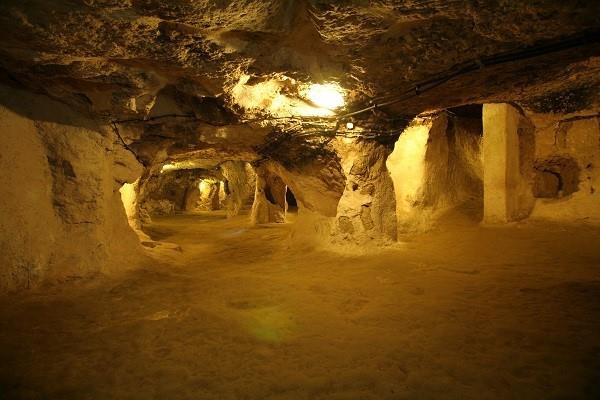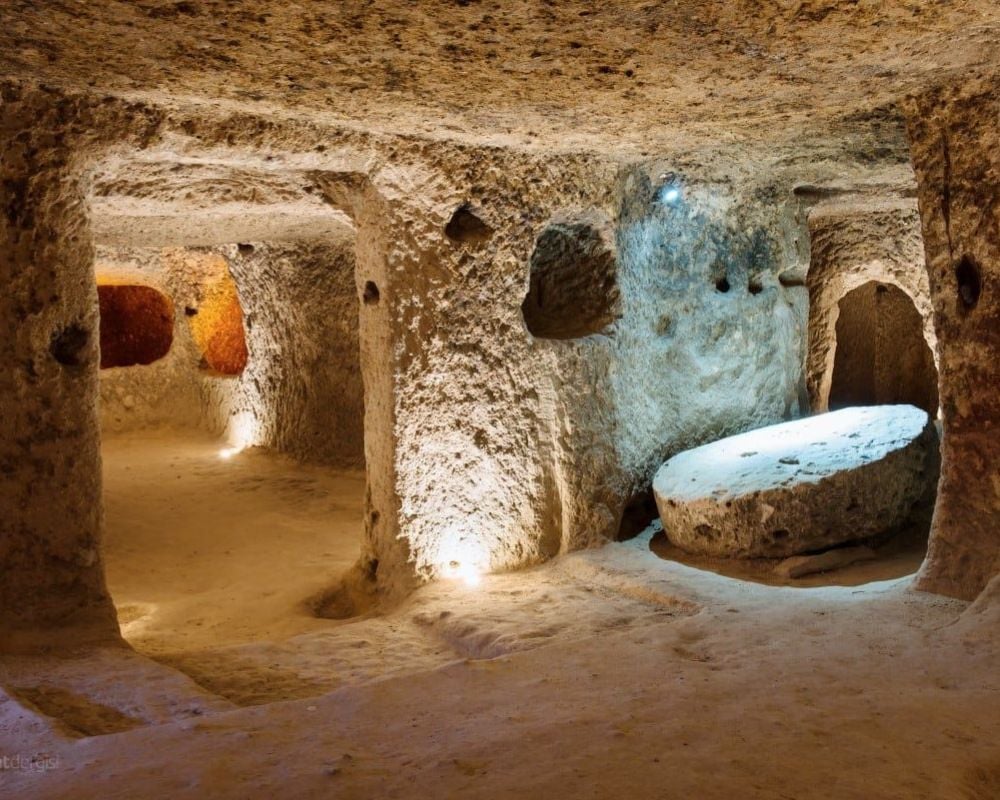
Derinkuyu Underground City: The Mysterious Labyrinth of Cappadocia
Derinkuyu Underground City is one of the most impressive underground cities in the Cappadocia region, located in the Derinkuyu district of Nevşehir, Türkiye.
Derinkuyu is situated 30 kilometers away from Nevşehir, which is centrally located in Türkiye.
Discovered by a villager by chance in 1963, Derinkuyu Underground City was opened to visitors in 1967. It derived its name from the 52 wells found at depths of 60-70 meters, providing drinking water. This mysterious underground city, approximately 85 meters deep and consisting of 18 floors, has hosted numerous civilizations throughout history.

Although the exact date of Derinkuyu Underground City’s construction is uncertain, it is estimated to have been utilized during the periods of the Hittites, Romans, and Byzantines. It is believed to have been particularly significant during the Hittite rule in the region.
Evidence of Assyrian Colonies can also be found in the city, and it is known that during the 2nd century, it served as a refuge for the first Christians fleeing Roman persecution, arriving from Mesopotamia via Kayseri to Cappadocia.
The city resembles an underground kingdom with its carved rooms, tunnels, ventilation shafts, wells, and living spaces.

It is estimated that around 20,000 people could have lived here.
Derinkuyu Underground City spans approximately 4 square kilometers. So far, only 8 levels have been cleaned and opened to visitors. While the depth of the opened levels is 50 meters, it is anticipated that once all levels are cleaned, the depth will reach 85 meters with an estimated 12-13 levels. The rooms and tunnels within the city are spacious and carved out of rock. Besides living quarters, the city contains various facilities such as kitchens, dining halls, wine cellars, churches, schools, stables, and water wells.

One of the most remarkable features of Derinkuyu Underground City is its advanced ventilation system. Ventilation shafts reaching every corner of the city ensure continuous circulation of fresh air, enabling long-term habitation underground.
Water needs in Derinkuyu Underground City were met by storing groundwater and rainwater. Wells located at different points in the city provided access to underground water sources, while rainwater was stored in specially designed cisterns.

Defense-wise, Derinkuyu Underground City was well protected. Its entrances were sealed with hidden passages and heavy rocks. Additionally, traps and secret rooms were strategically placed throughout the city for defense against enemy attacks.
You may also like
- A 1700-year-old statue of Pan unearthed during the excavations at Polyeuktos in İstanbul
- The granary was found in the ancient city of Sebaste, founded by the first Roman emperor Augustus
- Donalar Kale Kapı Rock Tomb or Donalar Rock Tomb
- Theater emerges as works continue in ancient city of Perinthos
- Urartian King Argishti’s bronze shield revealed the name of an unknown country
- The religious center of Lycia, the ancient city of Letoon
- Who were the Luwians?
- A new study brings a fresh perspective on the Anatolian origin of the Indo-European languages
- Perhaps the oldest thermal treatment center in the world, which has been in continuous use for 2000 years -Basilica Therma Roman Bath or King’s Daughter-
- The largest synagogue of the ancient world, located in the ancient city of Sardis, is being restored











Leave a Reply